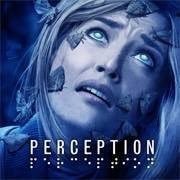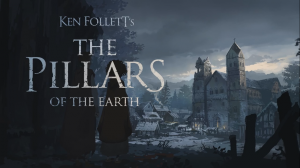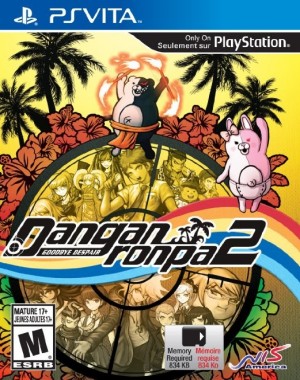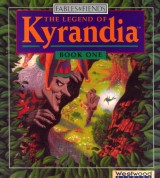Review for XING: The Land Beyond
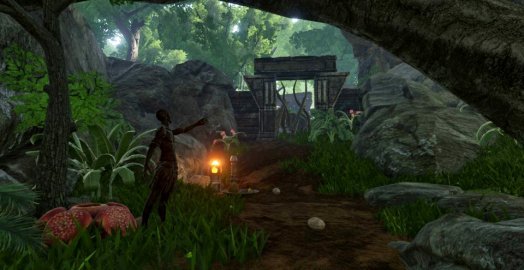
Though you may sometimes die in adventure games, it isn’t often that you start out dead. XING: The Land Beyond begins with just such an unusual scenario. Shuffling off this mortal coil takes you straight to the afterlife, a surreal space full of portals to different historical eras. Massive boulders float nearby, spores drift through the air, and blue stars dazzle as they move in arching curves. A waterfall streams through the sky above you and streaks of light caper among the clouds. This is a fascinating, eye-popping, ravishing place to explore, and you soon find yourself breaking through stained-glass gates to enter lushly realistic worlds. There you’ll learn the story of the hero or heroine of each era, and solve stimulating logic puzzles that remove barriers and propel you on a journey full of awe and self-discovery.
XING is, in many ways, a solitary quest, as you won’t meet other mortals. However, before you enter the first portal, you confront a sentient stone creature who is your guardian and explains that “…in death you have much still to do.” It turns out that four souls inhabit the four worlds you must enter, and unless you advance along paths fraught with brain teasers and learn the strengths and weaknesses of each protagonist in an effort to capture them, they will fade into oblivion. Fortunately, the giant has planted stone basins along the way that provide hints, sage remarks and satirical comments. And as you progress through the game, you discover an even more urgent reason to delve into the lives of these particular souls.
The places you visit include a Pacific Island, a jungle deep in South America, a mountain in Asia, and a Middle-Eastern desert, each set in a different time period hundreds of years in the past and portrayed in some of the most astoundingly gorgeous 3D graphics I have ever encountered. The environments are mostly naturalistic, but the puzzle elements are often eerily lit, giving a dreamlike quality to the rustic surroundings. The attention to detail is impressive. For instance, unlike virtually every other 3D game I’ve played where leaves are stiff and unrealistic, here most of the foliage looks pliable and alive. Footsteps show up in the sand and snow, then slowly fade. Ice melts gradually. Fruit with a tender skin is charred if you burn it and later douse the flame.
I spent hours roaming the hills, gorges, beaches, lakes, and gardens, reveling in the beauty of it all. As I wandered I could see flora moving in the breeze, watch the rippling water, and listen to the torch flames crackle. In each world you can control the day-night cycle and create rainstorms by standing on glowing circles with sun, moon, or raindrop icons. Nighttime is a wonderfully eerie contrast to the play of light and shadow during the day, and the rain and mist dampen and blur the landscape and atmosphere. You can also sometimes conjure up snowfall, which transforms the pine needles and grass into delicate crystal-like patterns.
The background music suits each of the locales. Syncopated beats are topped by a whimsical flute tune in the jungle sequences. Delicate keyboard and string melodies add an aura of mystery to the island scenery. And pensive orchestral music with an Asian influence brings a deep sense of longing to the frosty mountaintops. The only drawback is that if (like me) you spend a great deal of time exploring and puzzling, the scores become repetitive.
Bits of story written in verse are offered in each world, set in stone tablets or on parchments, explaining the life paths of the individuals whose souls you are trying to secure. The stories presented are somewhat light on detail, but thoughtful nevertheless. While investigating where they lived, you handle objects they touched and contemplate their concerns and secrets. The poetry is voiced, with the voice-overs ranging from acceptable to remarkable. One character you follow is a child, and though it’s typically hard to get a child’s voice to sound authentic, this one is spot-on.
The decision to tell a series of tales via chunks of poetry is an odd one, because it feels rather formal and tends to distance you from the characters. I read everything about the people in the first two worlds, but didn’t really feel as though I knew them. In the third and fourth worlds, however, the poetry and voice-overs began to bring the personalities to life (or perhaps I became accustomed to this unusual way of presenting them). As I progressed, I felt that I understood how these characters struggled and why they weren’t at peace, even in the afterlife, though I still didn’t feel like I knew any of them deeply. Then again, I found the ending story synthesis satisfying enough that I realized a profound knowledge of each individual wasn’t crucial.
Beyond poetry, XING also tiptoes into the realm of philosophy. The stone giant hints at a theme for each world, raising thought-provoking questions as you follow their respective stories: What does it mean to truly be alone? To see the world with the heart of a child? What happens when you insist on absolute control? Is expressing love more important than doing your duty?
There are some outstanding puzzles along the way, and XING handles the ramp-up of difficulty just about perfectly. You gradually discover how to use items and devices, as well as capitalize on the day-night cycle and weather changes to solve the varied conundrums. You can only pick up one object at a time (there is no inventory feature), but lots of everyday stuff is available for you to acquire: gourds, sticks, seashells, fruit, etc. These items can be dropped, used on hotspots, aimed at targets, or set aflame. (My favorite was a flaming banana.) At first I attempted to pick up every object and group them in piles in case I needed them later, but I ended up only occasionally needing these common items, and they were always near at hand when I did require them.
In addition to abundant everyday products, there are essential artifacts to find – these you must puzzle your way to, and then match up with the correct basin. Challenges in your travels include moving heavy columns to specific spots, using trampoline-like drums to direct objects, changing the direction of the wind, flooding and freezing areas, placing objects in the right pattern, and adjusting devices to raise, lower and turn platforms.
You can also collect runes. These are optional, in that you can make it to the end of the game without acquiring a single one. However, they are worth the trouble, partly because they affect certain inscriptions, but mostly because there is a bonus area in the afterlife composed of additional worlds with more stories to tell, and these can only be accessed if you have retrieved the related symbols.
Many runes require you to solve puzzles in order to reach them, and (especially late in the game) these are some of the toughest obstacles I encountered. I ended the game’s four main levels without managing to collect all the runes. After consulting a walkthrough and with much forehead slapping as I realized what I’d missed, I went back into the Asian-themed locale to obtain one that had originally eluded me. In doing so I found, to my surprise, that returning meant I had to redo most of the puzzles I’d already solved in that world. Admittedly, it went fairly quickly since I’d done them before…but patient repetition isn’t exactly one of my strong points. So, was it worth it to see the bonus environment that then opened up? Good question!
Because I played XING before the “Jump Assist” update was released, tricky leaps occasionally held me up. Interestingly, they didn’t require perfect timing so much as a lot of experimentation with the placement of my jumps. I switched away from the WASD keys and mouse and tried using a controller to see if this made it easier, but it didn’t. Now that it’s available, if you choose to enable “Jump Assist” you can eliminate the frustration of these action-like challenges altogether. (Clearly I wasn’t the only one having trouble.) Even without trying the difficult leaps, unless you navigate precisely you may sometimes fall from the many high ledges or narrow platforms (I enjoyed gazing at the various landscapes as I hurtled downwards). But being dead already, you are returned very close to where you launched yourself or fell.
XING plays from a first-person perspective with an ever-present cursor in the center of the screen and uses autosave only. It ran flawlessly on my brand new gaming rig, but players with older computers may have to go into the settings menu and turn down some of the display and detail features before it will perform smoothly. Though you can’t record your progress manually, the menu contains three slots so that you can have three games saved simultaneously.
Whenever you return to the game, you’re shown the percentage you have already completed. However, this progress meter is a tad unreliable. Just when I thought I had finished (and was of course looking forward to a well-earned, all-will-now-be-explained cutscene) it turned out that there was yet another large, complex puzzle world to solve – the final “test” where I was expected to use everything I’d learned previously. If you are a hardcore puzzle lover, you will whoop with joy and dash blithely into more column-pushing, weather-changing and platform redirecting. I took a deep breath and plunged in, making it through after a couple more glimpses at a walkthrough. Only after a last encounter with the stone giant were all my efforts finally put into complete perspective.
It took me 33 thoroughly immersive hours to complete XING: The Land Beyond. This game will inevitably be compared to Myst, and certainly fans of that series will enjoy it. But aside from the first-person perspective, vast and varied lands to traverse, and challenging logic puzzles, XING is a horse of a different color. Instead of fantasy worlds like those in Myst, the magnificent environments here are mostly rooted in exotic, elegantly rendered Earth locales. The objectives are often multi-stepped, but they start out quite intuitive and only gradually become formidable, bringing you up to speed at just the right pace. And unlike many puzzles in Cyan’s classic series, these tasks are relatively contained, never requiring you to navigate back through large parts of the landscape to see (for example) what changes when you pull a lever. In fact, I was surprised to find that in some ways this game transcends Myst, and from me that is high praise indeed. If you are an avid explorer who appreciates gorgeous environments filled with inventive, well-constructed conundrums, pull on your walking boots and put on your thinking cap and prepare for the fantastic journey of a lifetime (or four).












